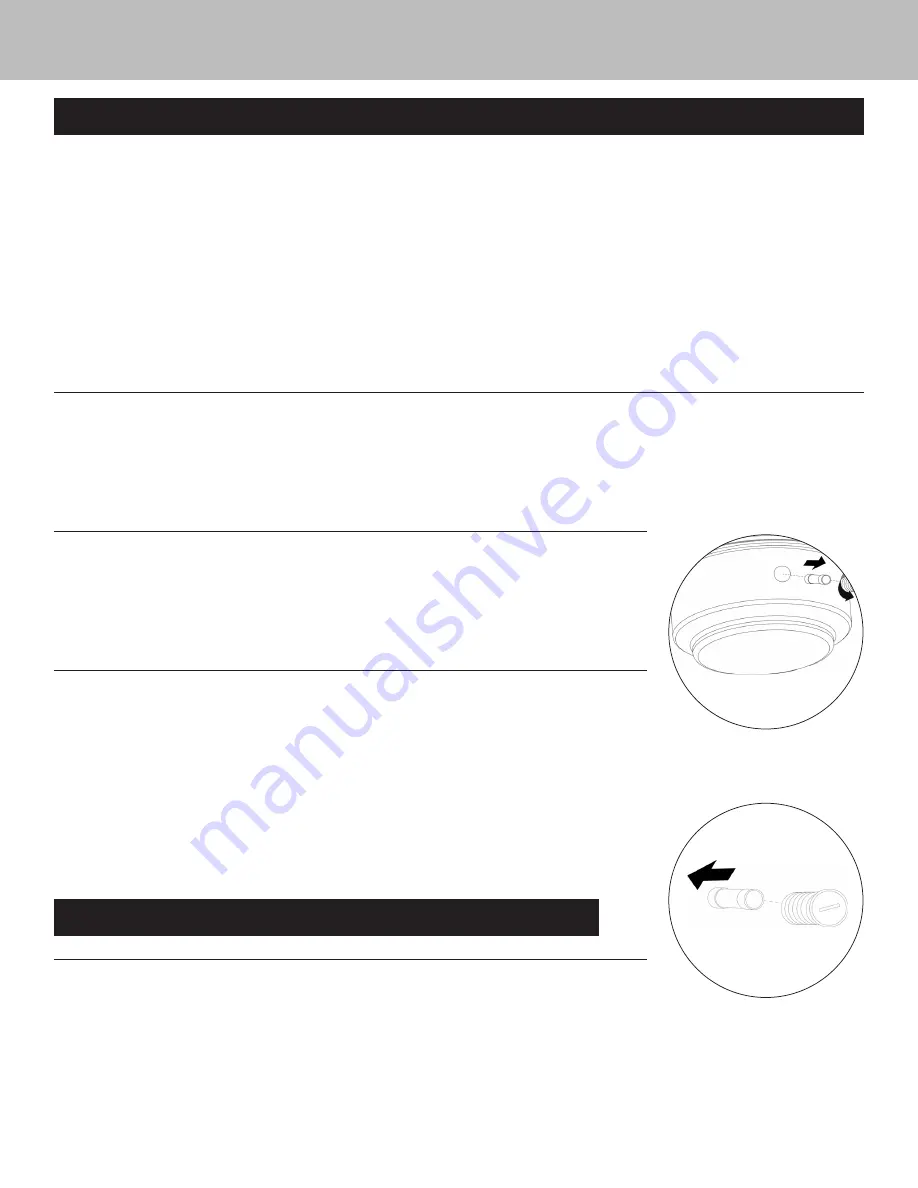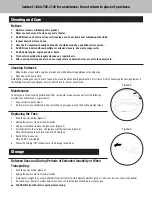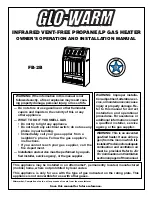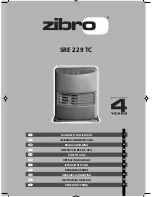
Contact 1.800.762.1142 for assistance. Do not return to place of purchase.
Cleaning and Care
Notices
1. Abrasive cleaners will damage this product.
2. Never use oven cleaner to clean any part of heater.
3. Do NOT clean any heater part in a self cleaning oven. The extreme heat will damage the finish.
4. Inspect heater before each use.
5. Have heater inspected annually and repairs should be made by a qualified service person.
6. Do NOT clean heater with combustible or corrosive cleaners. Use warm, soapy water.
7. Do NOT paint engine, engine panels or dome.
8. This heater should be thoroughly cleaned on a regular basis.
9. After a period of storage and/or non use, inspect for any abrasion, wear or cuts to the power cord.
Cleaning Surfaces
1. Wipe surfaces clean with a solution of water and mild dishwashing detergent or baking soda.
2. Wipe clean with damp cloth.
Note: While cleaning your unit, be sure to keep the area around the heating element dry at all times. Do NOT submerge the heating element. If
the heating element is submerged in water, do NOT use it. It must be replaced.
Maintenance
To enjoy years of outstanding performance from your heater, make sure you perform the following
maintenance activities on a regular basis:
1. Keep exterior surfaces clean.
2. Air flow must be unobstructed. Keep circulating air passages around the heating element clean.
Replacing the Fuse
1. Push the power button (Figure 2).
2. Unplug the power cord from the wall outlet.
3. Using a screwdriver, remove the fuse cover (Figure 3).
4. Carefully remove the old fuse, and replace with the new fuse (Figure 4).
Note: ONLY replace the old fuse with a 250V 15A fuse.
5. Reattach the fuse cover.
Note: Do NOT over tighten.
6. Follow the Turning “ON” instructions or the Storage Instructions.
Storage
Between Uses and During Periods of Extended Inactivity or When
Transporting:
1. Push the power button (Figure 2).
2. Unplug the power cord from the wall outlet.
3. Store heater upright in an area sheltered from direct contact with inclement weather (such as rain, sleet, hail, snow, dust and debris).
4. If desired, cover heater to protect exterior surfaces and to help prevent build up in air passages.
W
CAUTION: Wait until heater is cool before covering.
Figure 3
Figure 4




















